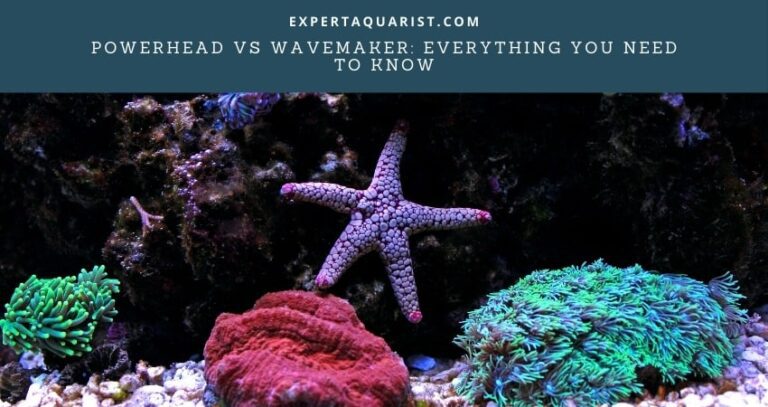If you are new to aquarium fish keeping, many species are beginner-friendly. They include hardy fish that are less likely to be affected by small changes in water conditions and are less prone to disease. Or peaceful species that co-exist with other fish.
When choosing beginner-friendly fish for your aquarium, also consider if they are easy to feed and the size of the aquarium.
Choosing fish that are the right size for your aquarium is important. Fish that grow too large can become unhealthy and stressed in a small aquarium.
Here are some of the best fish for beginners to consider.
1. Betta Fish

Betta fish, also known as Siamese fighting fish, are freshwater fish native to Southeast Asia. They are popular pet fish due to their vibrant colors and unique appearance, which includes long, flowing fins.
Betta fish are territorial and should be kept individually, as they may become aggressive towards other fish. They are often kept in small aquariums that is at least 2.5 gallons in size.
Tropical fish require a water temperature of 76 to 82 degrees Fahrenheit. They are known to be hardy fish and can tolerate a wide range of water conditions, but they require a clean and well-oxygenated environment to thrive.
2. Goldfish
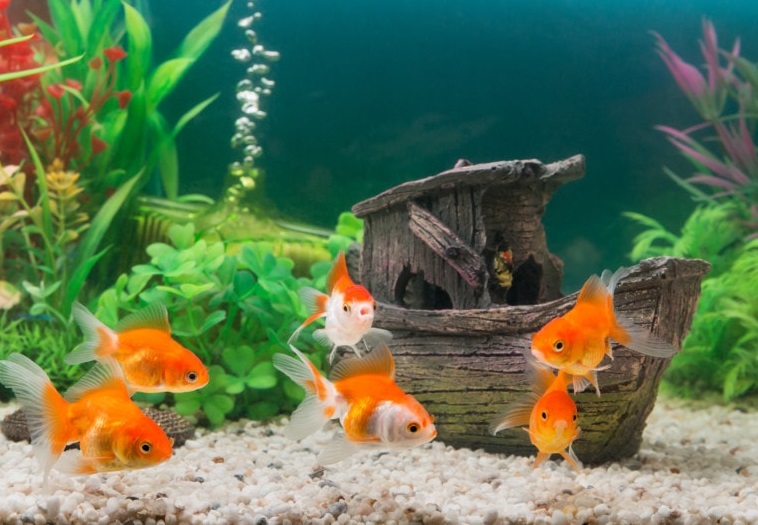
Goldfish are another low maintenance fish for beginners because they are hardy and come in various shapes, sizes, and colors. They are native to East Asia and have been kept as pets for centuries.
To keep goldfish in an aquarium, you will need to provide them with a spacious tank of at least 20 gallons.
Goldfish are cold-water fish, so the water temperatures should be between 65 and 75 degrees Fahrenheit. You should also provide them with a filtration system to keep the water clean, as well as plenty of hiding places and plants.
In addition to providing them with a spacious fish tank and maintaining the proper water temperature, you should also feed them a high-quality diet that includes a variety of pellet or flake foods and occasional live or frozen foods for variety.
Goldfish are social fish and do well in groups, so you should consider keeping at least three of them together. It is important to regularly clean the tank and monitor the water quality to ensure the health and well-being of your goldfish.
In addition, goldfish are messy eaters and produce a lot of waste, so you may need to perform partial water changes more frequently than with other fish.
3. Guppies

Guppies are some of the easiest fish to keep. They are hardy fish and relatively easy to care for. They are also known for their colorful appearance and can add visual interest to the aquarium.
Guppies are generally peaceful and can be kept with other non-aggressive fish. They are also small, so they do not require a large fish tank and are relatively inexpensive to purchase.
However, as with any pet, it is important to research and learn about their specific care requirements to ensure they thrive in your care.
4. Corydoras Catfish

Corydoras catfish, also known as Cory cats or Corydoras, are a popular type of tropical freshwater fish native to South America. They are named for the barbels on their face, which resemble a cat’s whiskers.
Corydoras catfish are small peaceful fish, making them a good choice for community tanks. They are also hardy and can tolerate a wide range of water conditions.
Corydoras catfish are bottom-dwellers and will spend most of their time scavenging for food on the tank floor.
They should be kept in a spacious tank with plenty of hiding places and a substrate they can dig in. They are also social fish and do well in groups, so you should consider keeping at least six together.
5. Neon Tetras
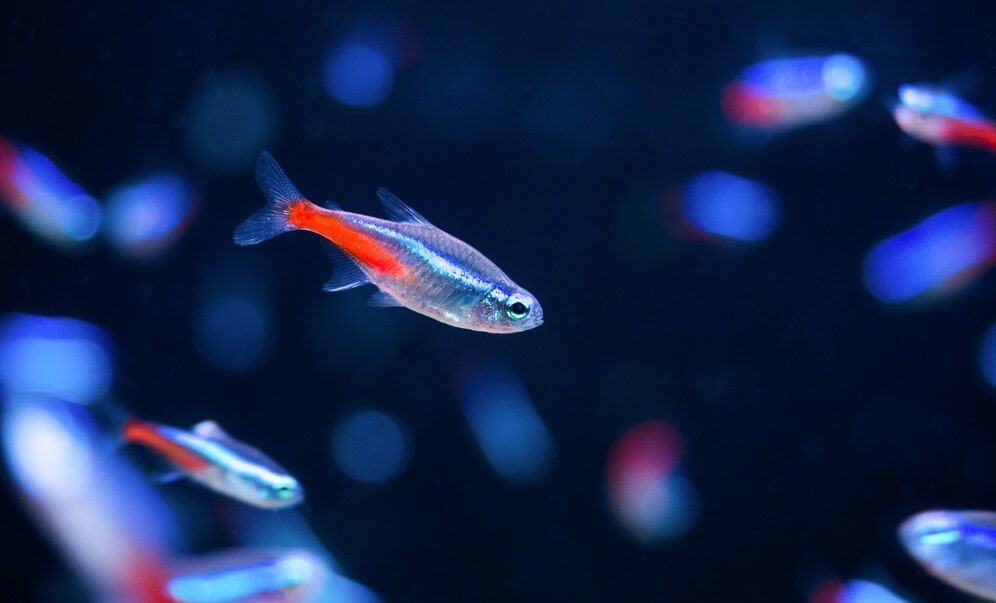
Neon tetras are a popular type of freshwater low maintenance fish native to the Amazon Basin in South America. They are small, colorful fish known for their bright blue and red stripes.
Neon tetras are peaceful fish and do well in community tanks with other non-aggressive species. They are tropical fish and require a water temperature of 76 to 82 degrees Fahrenheit.
6. Platies

Platies are popular for their vibrant colors and interesting patterns. They are peaceful fish and do well in community fish tanks with other peaceful species. They are also live-bearing fish, which means they give birth to live young rather than laying eggs.
As a result, they can breed quickly and produce more fry than you can accommodate. So, you should be prepared to manage their population or consider separating the males and females.
When keeping platies, also consider that they are omnivorous and require a varied diet that includes high-quality pellet or fish flakes and occasional live or frozen foods for variety.
7. Swordtails
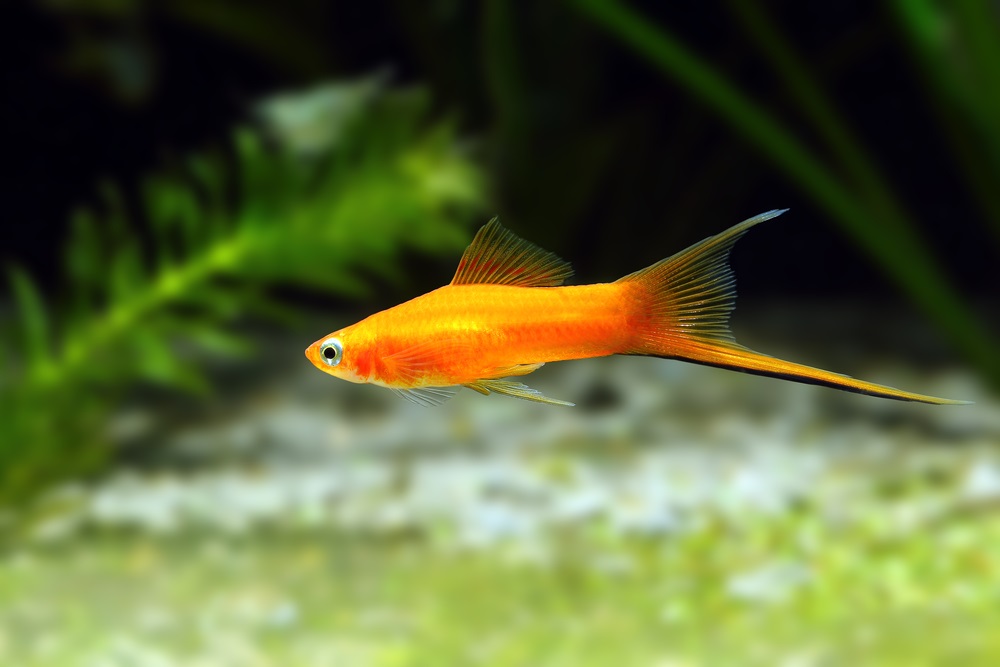
Swordtails are a type of freshwater tropical fish native to Central and South America. They are known for the long, sword-like extension on the males’ tails, which gives them their name. Like the platies, they are omnivorous and live bearing fish.
They are social aquarium fish and do well in groups. However, the males’ long, sword-like tail can make them a target for bullying by other fish. You should provide plenty of hiding places and plants to help them feel safe and secure.
8. Zebra Danios
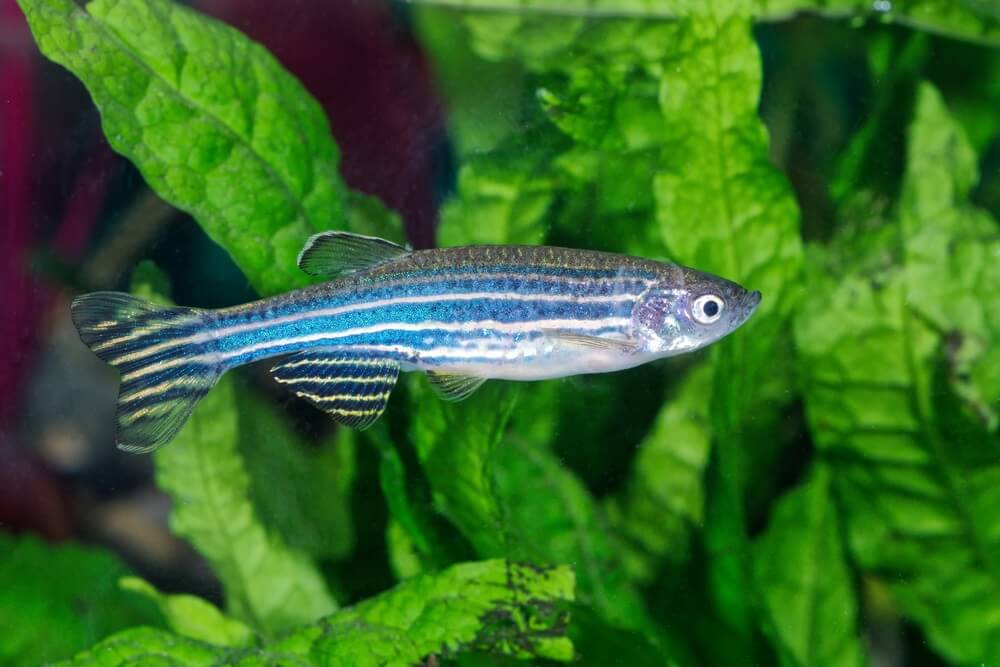
Zebra danios are active and fun to watch, making them one of the best fish to keep in aquariums. Because they are social fish, keeping them in groups of at least four or five is best.
As long as you provide them with a suitable environment and proper care, zebra danios can greatly add to any aquarium.
To keep them in an aquarium, you’ll need a tank of at least 10 gallons in size, as they need plenty of room to swim. The water temperature should be between 72-78 degrees Fahrenheit, and the pH should be between 6.5-7.5.
Zebra danios are shoaling fish, so you should keep at least six of them together. They also prefer to have plenty of hiding spots and plants in their tank, so be sure to include some decorations and plants they can use for shelter. Finally, feed your zebra fish a high-quality, varied diet of small pellets or flakes designed for tropical fish
9. Mollies
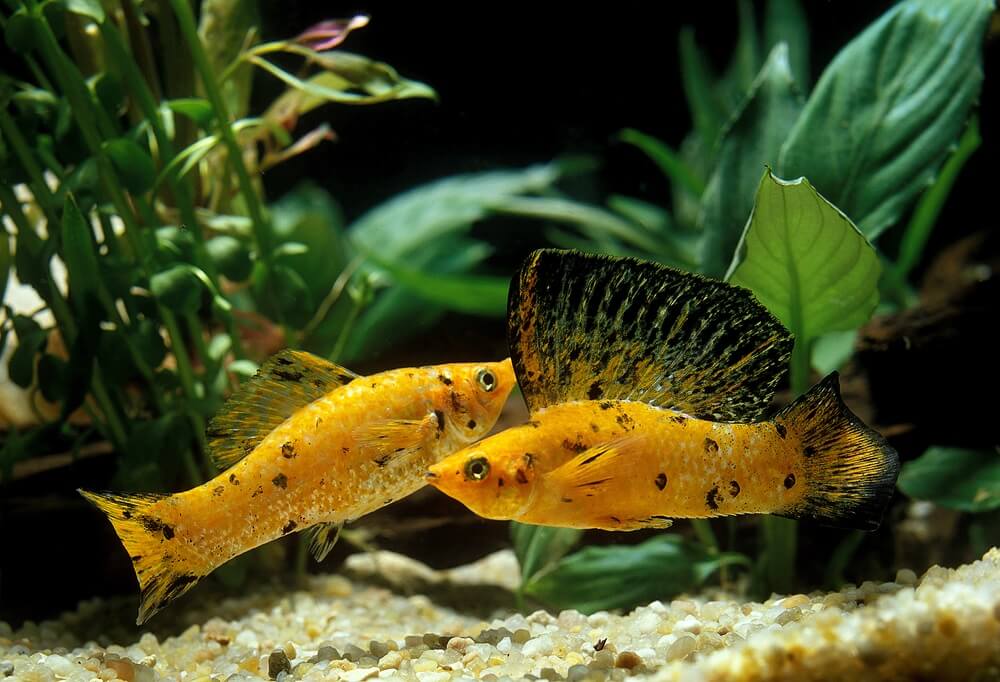
Mollies are a type of fish that belongs to the family Poeciliidae, which includes livebearers such as guppies, swordtails, and platies. They are native to North and Central America and are popular among aquarium hobbyists for their colorful appearance and easy-care requirements.
Mollies are known for their ability to thrive in various water conditions and adapt to freshwater and brackish environments.
They are schooling fish, so it is best to keep them in groups of at least six or more. They prefer a pH between 7.5 and 8.5 and a temperature between 72 and 82 degrees Fahrenheit.
Mollies are omnivorous and eat various foods, including fish flakes, pellets, and live, frozen, and plant-based foods. They are livebearers, requiring plenty of hiding places, such as plants and caves, to give birth in.
Regular water changes are important for maintaining good water quality and keeping your mollies healthy.
The fish are sensitive to changes in water conditions, so it is important to slowly acclimate them to your aquarium by adding small amounts of water from the tank to their container every few minutes.
10. Cherry Barbs

Cherry barbs are small, colorful fish that belong to the genus Puntius. They are native to the rivers of India and Sri Lanka and are popular among aquarium hobbyists for their bright red coloration.
Cherry barbs are typically peaceful fish and can be kept in a community tank with other peaceful species.
They are omnivorous and will eat various foods, including flakes, pellets, and live, frozen, and plant-based foods. It is important to provide cherry barbs with plenty of hiding places and plants in the aquarium, as they are shy fish and may become stressed if they do not have places to retreat to.
Conclusion
Choosing one of these beginner-friendly fish species ensures that you have a successful and enjoyable experience as a fish keeper.
Research your preferred fish species to establish the conditions required for them. Also, choose their tank mates carefully. Provide the fish with a suitable diet. Regular water changes are also important for maintaining good water quality and keeping fish healthy.




